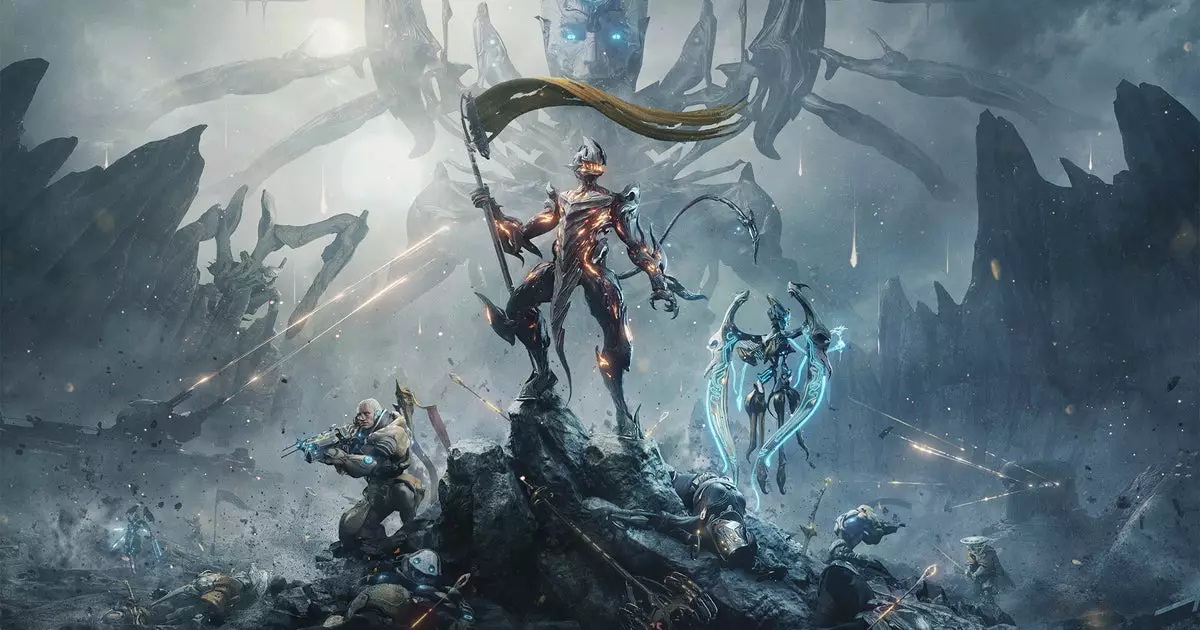Warframe, at first glance, appears to be just another expansive online game with sci-fi themes and relentless combat. Yet, beneath its sleek, metallic veneer lies a complex tapestry of lore, lore that has been meticulously woven over more than a decade. The game’s steady ascension from a niche project to a colossal free-to-play phenomenon exemplifies how resilient platforms can evolve by embracing layered storytelling, innovative gameplay, and continuous updates. For newcomers, it might seem intimidating—an intricate universe that demands dedication and curiosity. But what stands out is Warframe’s refusal to plateau, consistently pushing boundaries with each passing year. It’s not merely a game; it’s an evolving universe that invites players to explore, engage, and influence its sprawling narrative.
The Deep Roots of Warframe’s Growing Legacy
What truly makes Warframe remarkable is its seasoned development team’s fearless approach to storytelling. The recently announced “The Old Peace” update embodies this ethos—launching players into a period saturated with history and unresolved tensions. Set against the backdrop of Perita moon, this update promises to peel back layers of war and peace, revealing how previous conflicts shaped the current chaos. The narrative intricacies introduce new factions, like the Dax Anarch Warriors, enriching Warframe’s already complex lore while diversifying combat scenarios. Moreover, the addition of new warframes, especially Uriel—devil-themed and intricately crafted—highlights a commitment to meaningful, character-driven design. The death of former art director Michael “Mynki” Brennan adds a poignant layer to this narrative, culminating in a warframe that bears his artistic legacy. This deepens the emotional ties players develop with the game, making each new addition feel like a tribute to the ongoing evolution of the universe.
Innovating with Content and Gameplay Depth
Warframe’s updates aren’t just cosmetic or superficial tweaks; they’re substantial shifts that enhance gameplay complexity and richness. The “The Devil’s Triad” standalone side story, for example, promises intense boss battles and the opportunity to acquire a new warframe and protoframes, emphasizing the game’s focus on challenging combat and strategic acquisition. The expansion of the focus skill tree signals a move toward more nuanced customization, allowing players to fine-tune their warframes and strategies deeply. Additionally, new features like the “The Teacher” quest serve an educational purpose—demystifying the intricate modding system, which can often feel overwhelming for new players. This focus on empowering players through understanding hints at Warframe’s dual identity: a game that rewards mastery but remains accessible enough to learn and grow within.
Beyond a Game: A Cultural Phenomenon and Future-Forward Vision
What’s most impressive about Warframe’s trajectory is its foresight. Announcements of collaborations, like the upcoming Warframe x Starfinder tabletop RPG module, reveal the game’s reach beyond digital boundaries. By bridging tabletop gaming with its narrative, Warframe actively builds a broader community and cements its status as a cultural phenomenon beyond the screen. Meanwhile, the plans for “Tau” in 2026, set to sustain the ongoing “Void War” saga, reflect an uncompromising ambition to craft an ever-expanding universe. These developments aren’t merely updates—they’re milestones in a deliberate, long-term strategy to keep the game vibrant and relevant. Digital Extremes demonstrates that true success lies in consistent innovation, grounded in a passion for storytelling and a willingness to adapt to player needs and emerging tech.
A Critical Perspective: Recognizing Warframe’s Limitations and Opportunities
While acclaim for Warframe’s continuous growth is warranted, it’s essential to scrutinize its challenges too. The game’s complexity, while appealing to dedicated players, risks alienating newcomers. Its steep learning curve and dense lore can be intimidating, potentially hampering wider adoption. Additionally, the game’s reliance on frequent expansions raises questions about resource management and long-term sustainability. Does Warframe risk overstretching itself by maintaining such a prolific update schedule? That said, the developers’ genuine vision—to create a living, breathing universe—remains compelling. It’s crucial that Digital Extremes balances innovation with accessibility, ensuring that the game’s depth doesn’t become a barrier but a catalyst for profound engagement. By addressing these shortcomings proactively, Warframe can solidify its position not just as a game of endurance but as a masterclass in evolving design.
Digital Extremes’ journey with Warframe exemplifies a rare blend of creativity, resilience, and vision. The game’s horizon is bright with possibilities—from side stories to expansive future campaigns—and it’s evident that Warframe isn’t just surviving; it’s thriving with purpose. Ultimately, its strength lies in its willingness to grow boldly, challenge conventions, and foster a community eager to explore what’s next. This unapologetic commitment to evolution positions Warframe not only as a successful game but as a pioneering force shaping the future of online gaming.

